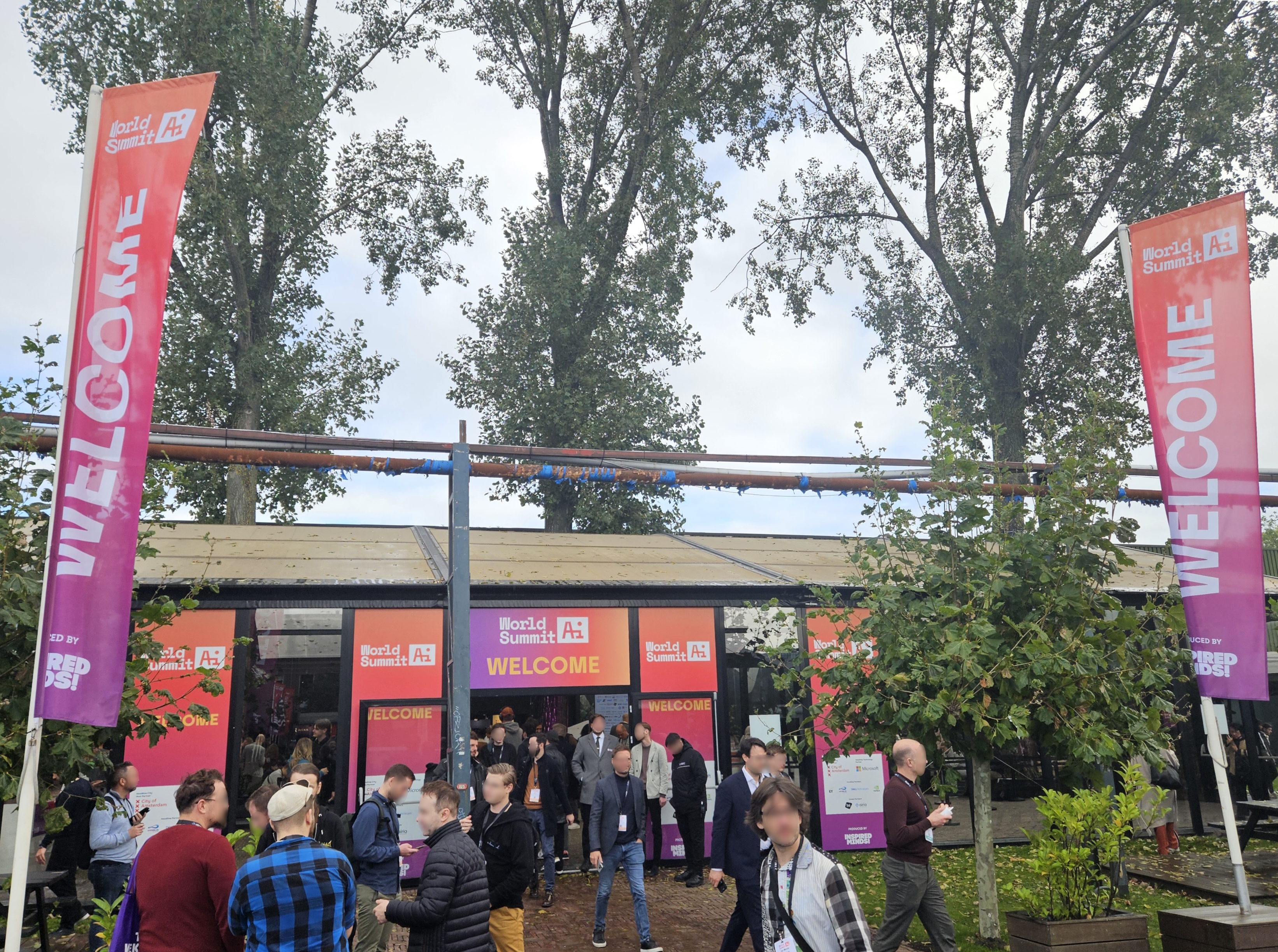
AI: Artificial Intelligence’s Brief Day in the Sun
Attending the World Summit AI conference in Amsterdam this week gave me a strong sense of déjà vu, harkening back to the Internet World conferences of the late 1990s. As with those events, World Summit AI displayed a schizophrenic combination of business solutions and technology offerings, as though people couldn’t make up their mind what they wanted from an AI-centric conference.
The schizophrenia didn’t end there. While the buzz was predictably centered on generative AI, there was plenty of talk about machine learning, computer vision, and other flavors of the technology.
For its part, the gen AI conversation was solidly in its “anti-hype hype” phase. Cheerleading for gen AI is now oh-so-2023. At this conference, the focus was on putting on the brakes.
How do we make AI serve people, not the other way around? What about security and compliance? Is gen AI good for more than slapping conversational interfaces on last year’s technology? And when will we ever come to our senses about gen AI’s flagrant consumption of natural resources? Plenty of questions, to be sure, but the answers boiled down to educated (and sometimes, not-so-educated) guesswork.
Nevertheless, despite all this turbulence, I was able to uncover some moments of calm – vendors with innovative, occasionally disruptive offerings.
AI for Business
Several exhibitors showed off various business solutions, begging the question as to why they were at an AI conference in the first place. Netherlands-based Struck.build BV, for example, displayed its AI-based solutions for the construction industry. Its offering helps real estate developers tackle compliance challenges, using gen AI to consume design documents, local regulations, and other unstructured data to provide insights into regulatory compliance challenges.
Struck exhibited at World Summit at the invitation of the City of Amsterdam, which gave it free booth space in its pavilion.
AQ22 UAB from Lithuania leverages gen AI to process business loans – loans that involve more paperwork than the more familiar homeowner mortgages. Such loans require human analysts to review documents, so AQ22 highlights elements in those documents that analysts need to pay attention to. AQ22’s primary motivation for attending the conference was to look for funding (and indeed, plenty of venture capitalists were walking the floor scoping out opportunities).
Voxdiscover BV in the Netherlands offers AI-based market research interviews, providing “voice of customer” market research data at a substantially lower price point than firms using human interviewers can manage. The company was at World Summit not as an exhibitor but to look for partners.
While these three vendors set out to build gen AI-based solutions, Germany’s iqast (RSG Software GmbH) created its supply chain forecasting software well before the gen AI wave washed ashore.
Instead, the company’s algorithms leverage computational intelligence, machine learning, and data science for forecasting based on multiple data sources, giving its customers credible predictions across complex scenarios involving multiple factors. Iqast’s motivation for attending World Summit was along traditional business development lines – although, as with the other business solutions, it was hard to say how many conference denizens were shopping for its particular offering.
AI Platforms: How to Build, Deploy and Scale AI-Based Applications
Though business solutions were an odd fit for what was essentially a technology-focused conference, there were a handful of tech standouts offering various AI platforms. Today’s enterprise AI playbook generally involves various departments experimenting with the technology in hopes of building something useful. The AI platforms at World Summit address an increasingly urgent need for a better way to build AI applications.
Four AI platform vendors caught my eye, each with its unique differentiators. Florida-based Airia offers an AI orchestration platform that helps organizations leverage various models to build and deploy AI-based applications across the application development lifecycle.
Airia also serves as a broker for large language models, as well as an intermediary that supports multiple models as its customers require. As a result, Airia helps with the new but growing problem of “model churn” that results from LLM vendors rapidly rolling out new models while deprecating older ones.
While Netherlands-based Nebius B.V. also offers a platform for building AI-based applications, its starting point is with bare metal – the GPU-powered hardware that underlies the modern AI boom. By leveraging its position as a favored Nvidia Corp. partner in Europe, Nebius has built out its own data centers with plenty of GPU power, offering its customers AI technology platforms that scale as well as the hyperscalers at a small fraction of the cost.
Its software platform – or more precisely, its platform-as-a-service – then runs on this dedicated cloud infrastructure, providing a competitive combination of scale and cost benefits to its customers. While the platform from Netherlands-based Orq.ai (Orquesta B.V.) also empowers developers to build and run AI-based applications, it also supports collaboration between business and technical people who must coordinate their efforts.
Because the behavior of such applications depends so heavily on the data feeding them, subject matter experts who both understand the data as well as the business goals of each application working hand-in-hand with the techies are especially important – even more so than with traditional enterprise applications.
The collaboration that Orq.ai offers, therefore, is essential for supporting the teams that build AI-based applications.
One common thread across all these platforms is their low-code capabilities. Visual drag-and-drop interfaces can streamline much of the work of building such applications, especially when they consist of workflows stringing together several AI-based tasks.
On first glance, Zetane Systems Inc. from Canada also offers such a low-code interface with the familiar boxes-and-lines metaphor that these drag-and-drop tools present.
However, in Zetane’s case, the interface is “full code” rather than simply low-code, as double-clicking on each task brings up the Python code that supports it. As a result, Zetane is more strictly a professional developers’ tool rather than, say, Orq.ai’s collaboration-centric offering. Zetane has another significant differentiator: Thanks to its background in computer vision, it supports AI models for image and video as well as the more common text-based models that gen AI typically deals with.
The Exciting but Short Lifecycle of the AI Conference
By the year 2000, Internet World had devolved from the hottest ticket on the planet to a sad affair focused on email marketing and other mundane offerings. I expect the AI conference landscape to take the same course.
Vendors hawking business applications will abandon ship, as they should spend their event marketing funds on conferences specific to their business focus. Even the AI platforms will be a better fit at more general-purpose information technology conferences rather than AI-specific conferences in a matter of a few years. After all, for all the hype, AI is little more than a handful of new tools in the enterprise’s technology toolbelt.
I don’t envision, therefore, that World Summit AI or any other AI conference will last more than a couple of years. In the meantime, however, take advantage of this overhyped technology’s brief day in the sun.
 Insights from the World Summit AI Conference
Insights from the World Summit AI Conference
 Exploring the Applications of Generative AI
Exploring the Applications of Generative AI















